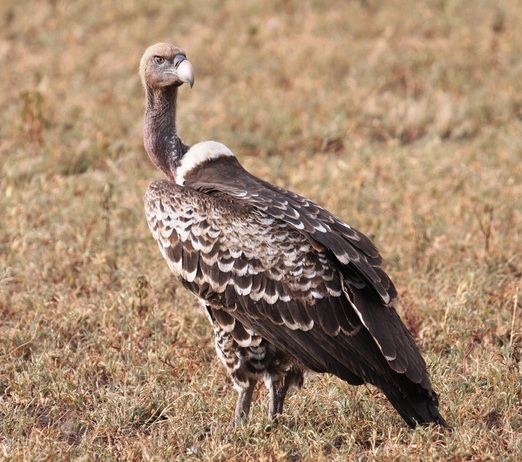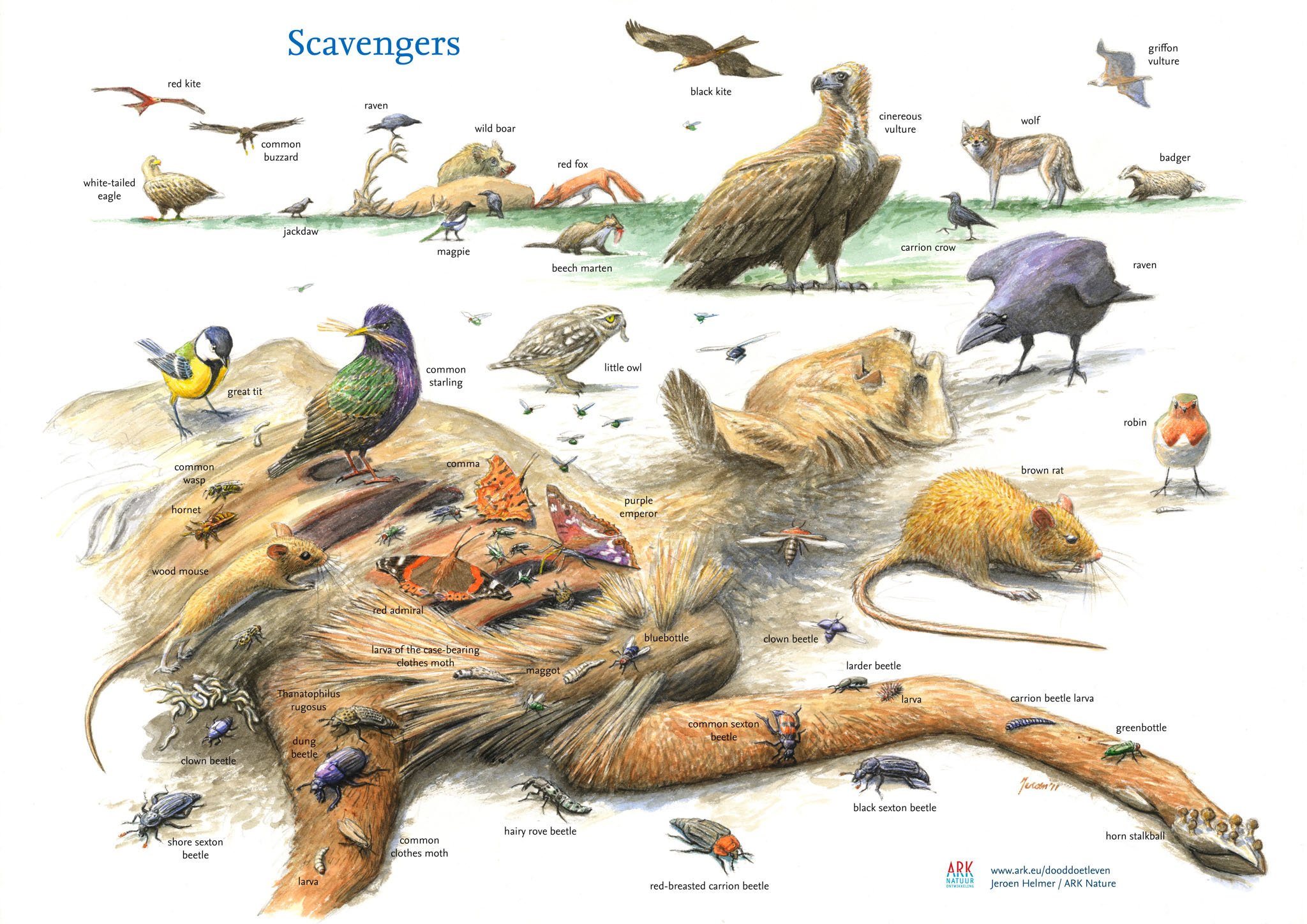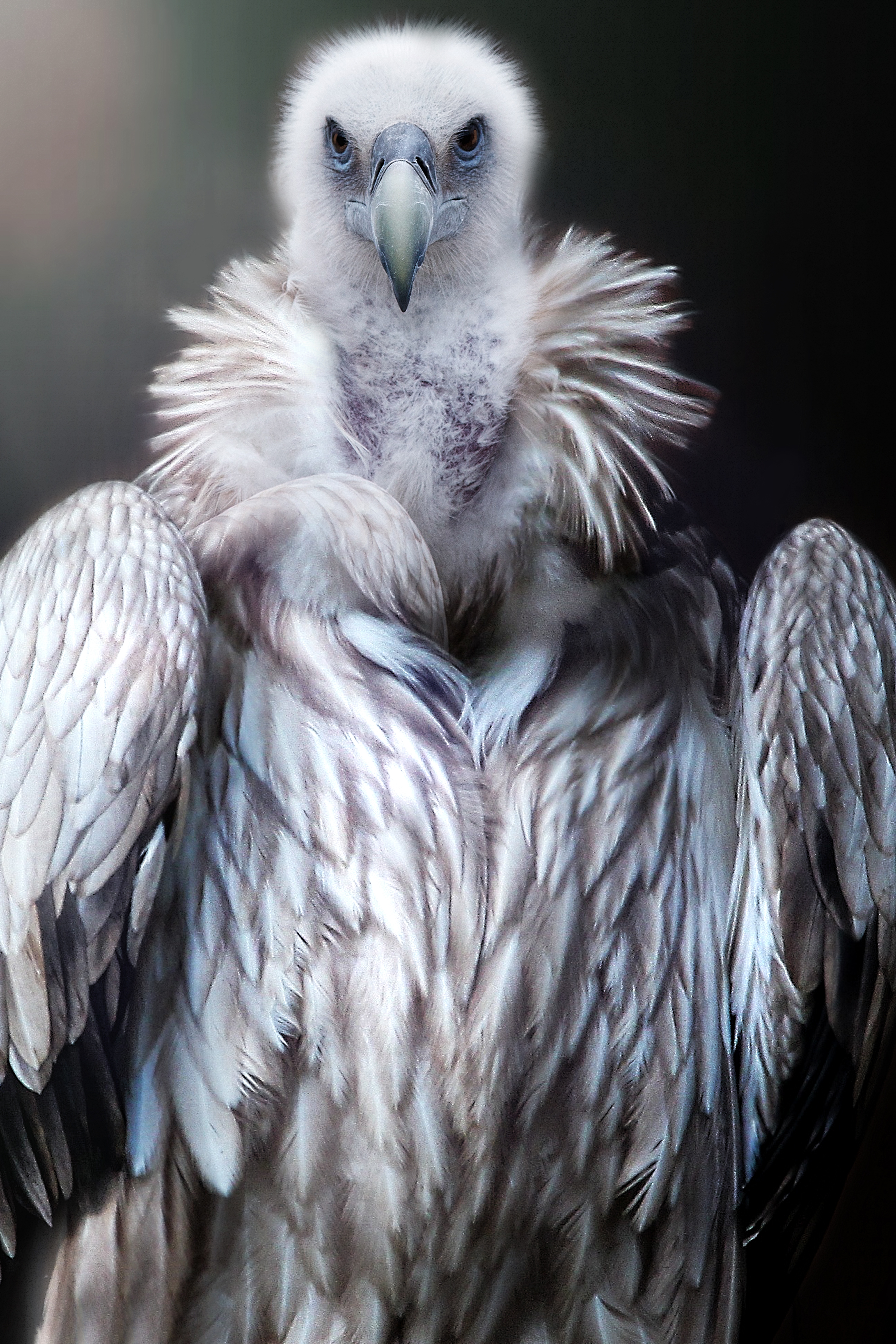
We use empirical and theoretic approaches to assess interactions between mammalian and avian scavengers in one of the most diverse scavenging guilds in Masai Mara National Reserve, Kenya.Within scavenging communities, avian scavengers often act as producers and mammalian scavengers act as scroungers, but we predict that species-specific cueing will allow for mammalian scavengers to utilize particular avian scavenger species using preferred food sources similar to their own preferences.Interspecific social information transfer can play a key role in many aspects of animal ecology from foraging to habitat selection to predator avoidance.

If you eat a lot of lean meat it doesn’t actually provide you with the sustenance you need to function well… Bone marrow is actually a nicely accessible package of fat in an otherwise fat-poor landscape.” And since many carnivores leave an animal’s bones behind after a kill, these could’ve been a good source of food for scavengers.


“We’re used to thinking of meat as a fatty product,” Thompson told Discover magazine. That’s because it’s fattier than flesh and may have thus provided more energy, says anthropologist Jessica Thompson, the paper’s lead author of a 2019 research paper published in Current Anthropology. READ MORE: Going Paleo: What Prehistoric Man Actually Ate Sucking out the marrowĪnimals’ bone marrow may have been an important food source for scavengers, too-perhaps even more important than meat. Early humans could obtain more calories and protein from meat using less digestive energy than they could from fruits, plants and seeds, so scholars assume that the switch in diet occurred along with these evolutionary changes. Over the same period, human intestines got smaller, meaning that it took less energy to digest food. We know that over 6 million years, human brain size increased by 300 percent. The way that early humans obtained meat matters because access to it likely played a big role in the story of human evolution. Neanderthal's scavenging a zebra carcass for food. After observing that lions in Kenya’s Ol Pejeta Conservancy leave a large amount of their kill intact, paleoanthropologist Briana Pobiner hypothesized in a 2015 paper in the Journal of Human Evolution that saber-toothed cats living there 1.8 million years ago may have killed and consumed their prey in a similar way, leaving plenty left over for hungry hominids. Still, it’s possible that scavenging alone could’ve provided enough nutrition for early humans. READ MORE: Did Homo Erectus Craft Complex Tools and Weapons? Making some prehistoric Big Macs “This is important because it provides the earliest archaeological evidence of this type of resource transport behavior in the human lineage.”įerraro and his team said the early humans who lived at Kanjera South showed signs of scavenging and hunting, meaning that picking apart an already-dead animal was not their only source of meat. “ hominins not only scavenged these head remains, they also transported them some distance to the archaeological site before breaking them open and consuming the brains,” anthropologist Joseph Ferraro, the study’s lead author, told. Given this, early humans may have been eating scraps left over from another animal’s kill. But later scholars noted that many of these tools seem more appropriate for cutting up bone and meat than for actually killing an animal. Early 20th-century archaeologists who uncovered the remains of animal bones with early human tools assumed that prehistoric people-or more specifically, prehistoric men-must have hunted these animals for food. While hunting is the act of killing animals for food, scavenging involves locating the remains of an animal that is already dead. It’s also changed how we understand the historical shift toward meat-eating-a dietary move that scholars think played an important role in human evolution.

But what if most early humans were actually scavengers? The notion, first proposed by scholars in the second half of the 20th century, has since challenged the dated presumption that prehistoric men hunted food and women gathered it. Popular culture often shows cavemen as aggressive, club-wielding hunters.


 0 kommentar(er)
0 kommentar(er)
